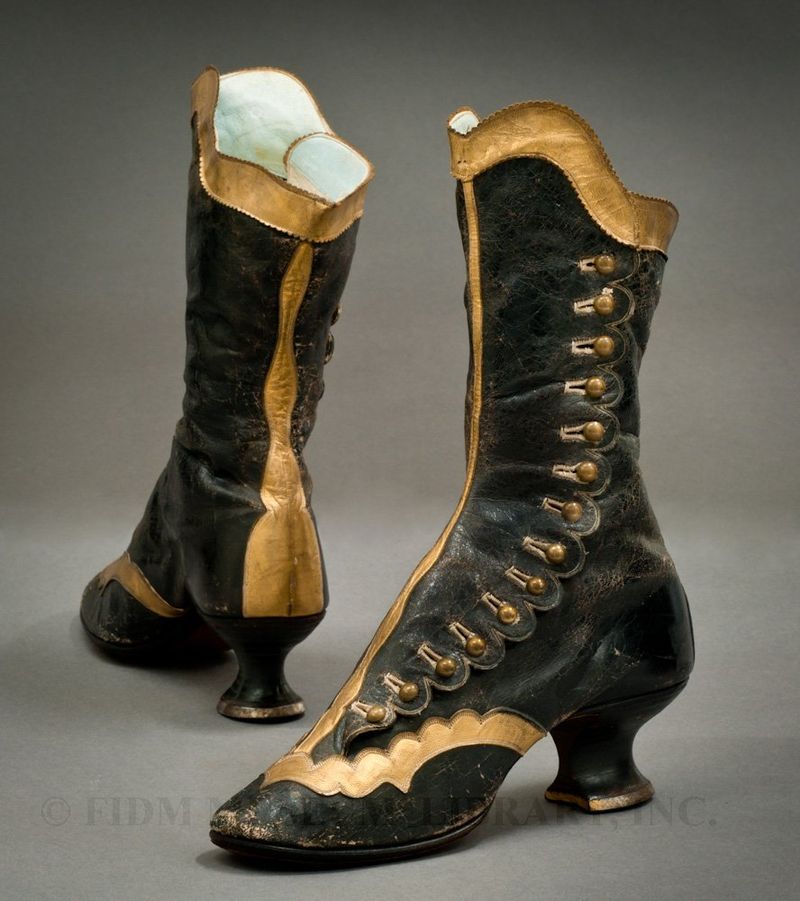Side-button boots, 1870s
The Victorian woman's wardrobe was divided into a dizzying array of categories. Morning, visiting, walking, evening, traveling, shopping, and mourning are just some of the activities and circumstances that demanded a dedicated ensemble. Understanding the difference between a dress for morning and a dress for traveling was valuable knowledge that helped a woman maintain her social standing and good reputation. For those women who needed help unraveling the specifics of dress and social etiquette, guidebooks such as The Ladies' Book of Etiquette, and Manual of Politeness (1872) and Etiquette: What To Do, and How To Do It (1885) offered detailed tips on polite manners and proper dress. Generally speaking, most 19th century etiquette manuals urge women to avoid excessively showy dress, and to ensure that accessories, fabric, hairstyle and other details are harmonious and suitable for the occasion. Though etiquette manuals offer startlingly detailed guidelines regarding most aspects of dress, they barely mention footwear. This is also true of the leading 19th century fashion magazines Godey's and Harper's Bazaar; these publications mentioned footwear, but relatively infrequently.
 Side-button boots
Side-button boots
c. 1870-79
Museum Purchase
2010.5.16AB
Because adult women usually wore their dresses to the floor, footwear was rendered nearly invisible. In the morning, a woman probably wore flat, decorative indoor or boudoir slippers, like this 1870-75 soft leather slipper. In the afternoon, a woman might change into shoes with a low heel, switching back to satin or kid slippers if she had an evening engagement. Boots were generally worn for outdoor pursuits, like walking, visiting, shopping and going for carriage rides. Boots were essential with the slightly shorter walking ensembles, because showing one's ankle was considered somewhat risque. Of course, a supple leather boot accentuated the curve of the ankle, but at least the ankle itself was out of sight.
Buttoned ankle boots predominated in the 1870s. In 1871, a Harper's Bazaar writer noted that street boots were "for the most part buttoned."1 Like the boots pictured above, the buttons were usually offset from center front. Though a small hand was considered the mark of a refined lady, few, if any, women had hands small enough to fasten the buttons used on women's boots. Because button boots were the dominant style, button hooks became a necessary, and sometimes decorative, accessory. This early 20th century button hook was designed by Louis Comfort Tiffany. The round hook was threaded through the buttonhole, and then used to pull the button through the hole.
Accented with gilded leather, these well-preserved boots were probably made to match or coordinate with a specific ensemble. The curved Louis heel echoes the shaped opening at the top of the boot, and the scalloped edge of the buttonholes. Like the woman in this early 1870s boot advertisement, the wearer of these black and gold boots was probably tempted to raise her skirts and show-off her stylish footwear.
1 "Notes on Fashion." Harper's Bazaar. 16 Sept. 1871: 581.